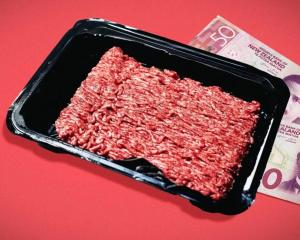
Beef + Lamb New Zealand Genetics and its research partners, including AbacusBio, have been working on three projects to update carcass and genomic data and to provide easier access to more accurate genetic information.
BLNZ Genetics general manager Graham Alder said there was to be a roadshow for breeders and farmers so they could learn more about the changes.
It had been about 25 years since the first set of data was sourced as part of New Zealand's Sheep Improvement Ltd (SIL) programme and since then, the sheep had got bigger and genetically better.
The three projects are 'nProve', Single Step and the SIL Meat Module.
Single Step and the Meat Module would be released in October but 'nProve' was being tested and trialled and would be available in April/May.
AbacusBio scientist Dr Neville Jopson has been working on updating data for the SIL meat module for the past four years.
''It will implement better breeding values, which will ultimately enhance sheepmeat production,'' Dr Jopson said.
He used ultrasound and CT scanning as well as the Alliance Lorneville's VIAscan data to measure carcasses and in particular, the shoulder, loin and leg cuts.
''We have used CT scanning as our gold standard for how much meat, fat and bone there is in the three cuts so we know how accurately the other technologies predict those,'' he said.
Dr Jopson said it was interesting to note while the weight of meat per carcass had increased during the past 30 years, the amount of fat in relation to the carcass had decreased substantially.
SIL was first launched in 1998, and the data collected had been in use since then.
However, it had become necessary to provide far more current and accurate information to the farmer as the average carcass weight had risen from about 14kg to an average of 18.4kg.
Single Step is new system, which will be used for genetic evaluations of production animals and would be in line with similar systems used internationally, Mr Alder said.
''It made the best use of phenotype, genotype and genomic information and also used pedigree and performance data,'' he said.
Its real value is for newborn animals and farmers are able to get very accurate breeding values by genotyping lambs at docking, and then they can figure out which ones to keep.
''The programme 'nProve', was a ''shopfront for sheep genetics in New Zealand,'' Mr Alder said.
It will allow farmers, breeders and consultants easier, improved access to information about particular sheep or breeds to make better informed breeding decisions and also replaces the SIL tools.
He said commercial farmers would be able to enter traits, breeding values, or outcomes such as lambing percentages, into an app or laptop and it would come up with the animal or breeder that met that criteria.
Mr Alder said they had held industry workshops to consult on the programme and invited input from users who were both IT literate and illiterate, across the computer skills spectrum.













